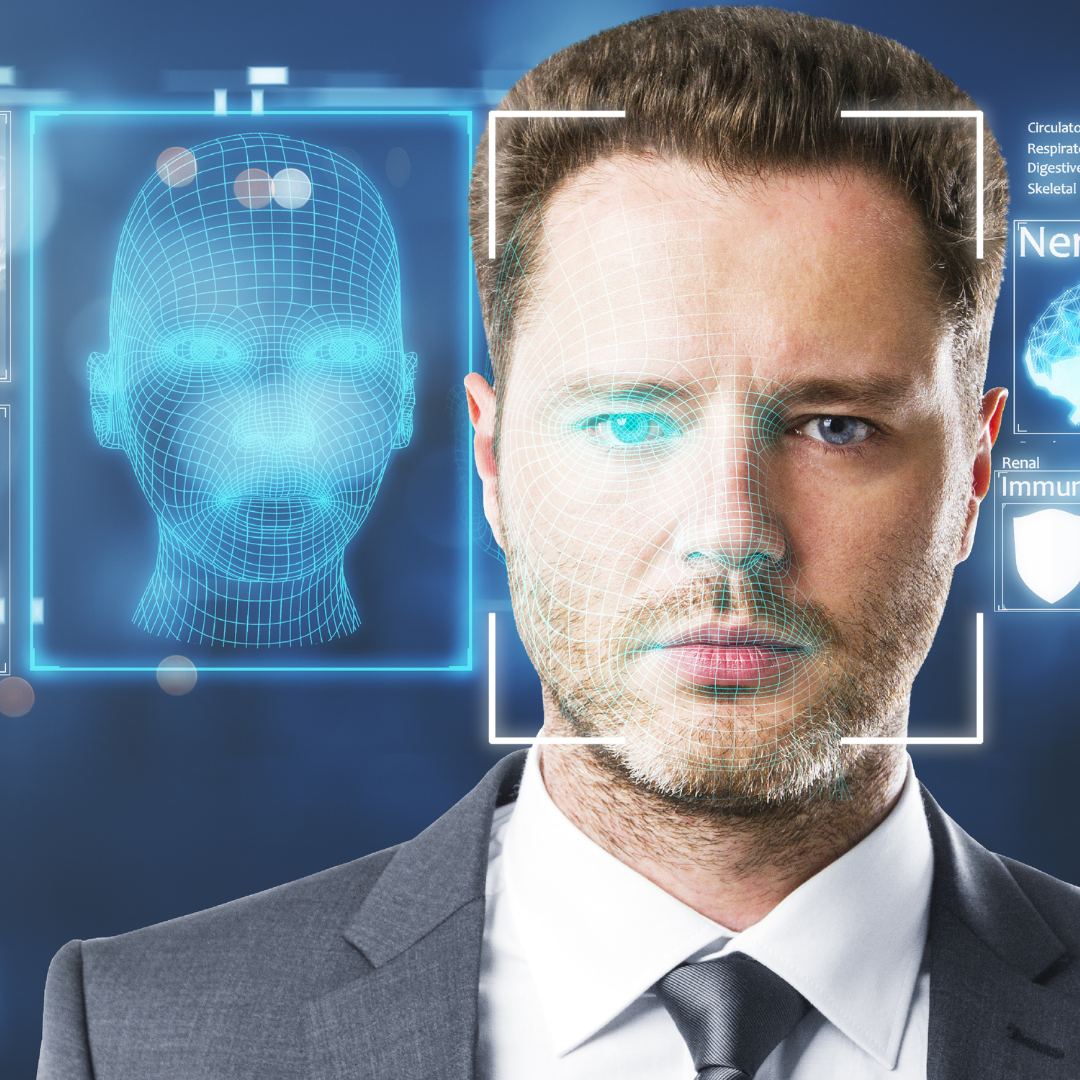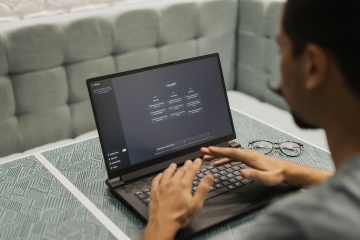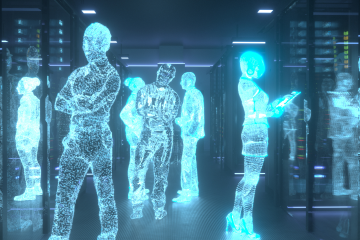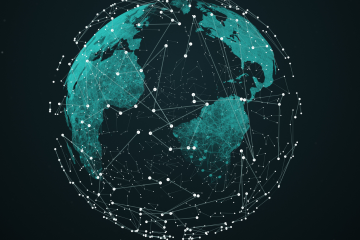
Facial-recognition software is an emerging A.I. technology that is taking off. This tech has applications for businesses in many industries. By using “biometrics” (physical features such as fingerprints), A.I. technology can I.D. in real time the “owners” of features like faces, palms, fingerprints, and the like.
The Five Most-Key Takeaways from This Blog Post
- One example that the Wall Street Journal reported on is airports using facial-recognition A.I. to I.D. faces at security checkpoints. This, naturally, is a godsend for anyone who forgets the driver’s license at home.
- Since the above bullet point made mention of it, other security applications here could be quite useful. Imagine, for instance, a convenience store that is able to submit security-cam footage to a law-enforcement agency that can use facial recognition to catch the perp.
- For more enterprise-level organizations, another use would be granting access to buildings, floors, rooms, and the like, with face-recognition I.D. verification.
- Likewise, A.I. can scan “palm signatures” for payment in stores, as this other report from the Wall Street Journal details. Basically, instead of having to finagle your credit card out of your wallet, you hold up your hand to the scanner. If you are comfortable with your financial data being linked in databases with your “body data”, then this will make things convenient for you. (No word yet on whether this A.I. can do medium-style palm readings.)
- “Liveness detection” will be a major keyword to remember about this A.I. tech. This refers to the tech’s ability to tell whether it is looking at, say, a live individual in front of the sensor. Or, perhaps just a still photo of someone’s face (or palm!) that a scammer may be holding in front of the lens. This will be important for ensuring that basic security concerns do not become big problems for adopters of this tech.
Converting to Numerical Data
Something worth mentioning here is that most biometric-data A.I. applications do not deal with a digital storage locker of pictures of people’s faces, palms, and the like.
Instead, the image(s) uploaded to the biometric-recognition software will be converted into a numerical representation of the biometric. It then deletes the source photograph(s) in the process.
So, this could perhaps assuage some people who worry about the collection of body data by companies and governments.
The Deepfake Problem: Hedge Your Bets, Business Owners
If you are a business owner thinking purely of how this technology can boost security and expedite the purchase process, then this all sounds great, does it not?
Well, here is one of the interesting things about the wide-ranging field of A.I.: an innovation in one area of A.I. can hamper the ultimate effectiveness of an innovation in another area.
Consider the example of generative A.I., which has (in-) famously made it easy to create “deepfakes” of real-life individuals.
Some of these deepfakes can be full-fledged video-and-audio content. That, then, poses a problem for the so-called liveness tests.
Consider a scam artists who plays a deepfake video of a human face. This deepfake could potentially say (figuratively) “open sesame” to a facial-recognition A.I.
Not only that, but as the world goes increasingly online, offline contexts where biometric-recognition A.I. would be used will shrink.
How to Hedge the Bet
Many business owners will still want to reap the potentially profitable benefits of biometric-recognizing A.I. software.
Fair enough, but how will businesses be able to mitigate problems like the deepfake liveness-test threat?
One solution is to not become solely reliant on such technology.
For instance, the T.S.A. still checks things like passports and traveler numbers while going through the security line. The facial-recognition part of the process just speeds up one part of the process, rather than the whole thing.
Other Great GO AI Blog Posts
GO AI the blog offers a combination of information about, analysis of, and editorializing on A.I. technologies of interest to business owners, with especial focus on the impact this tech will have on commerce as a whole.
On a usual week, there are multiple GO AI blog posts going out. Here are some notable recent articles:
In addition to our GO AI blog, we also have a blog that offers important updates in the world of search engine optimization (SEO), with blog posts like “Google Ends Its Plan to End Third-Party Cookies”.





